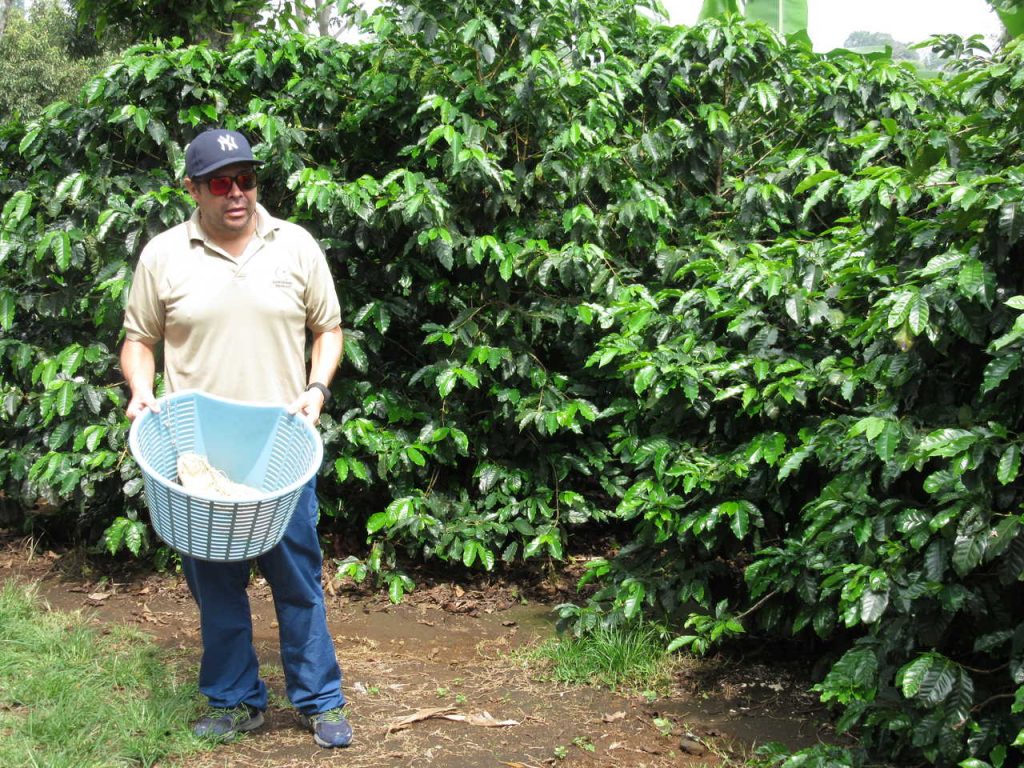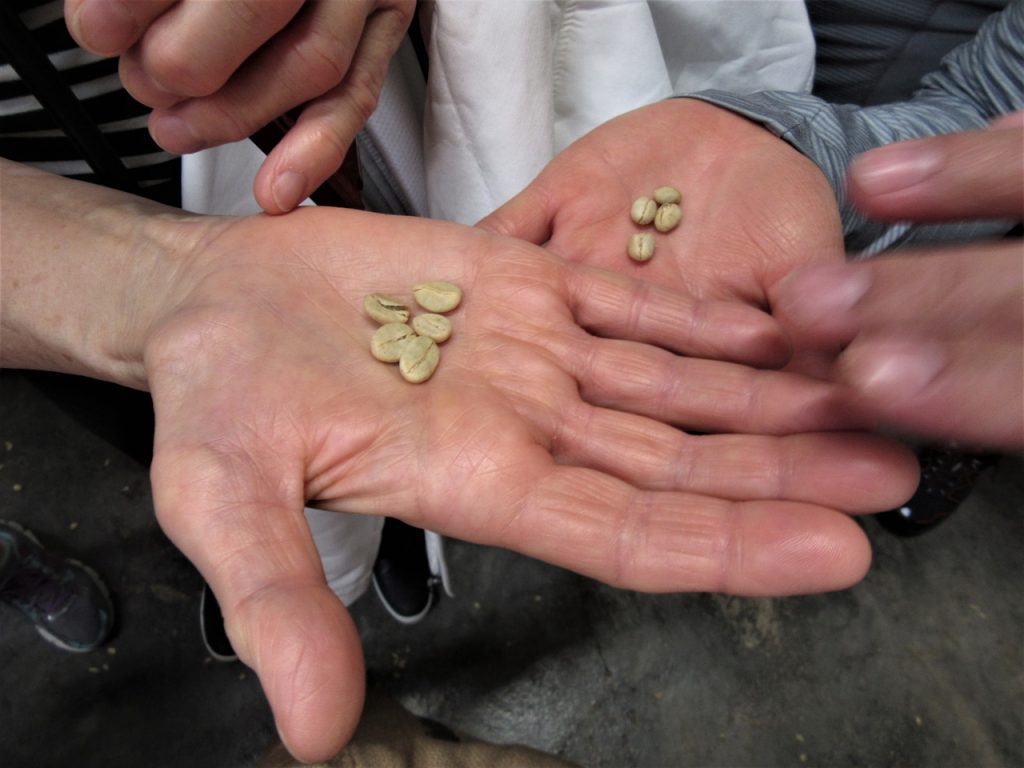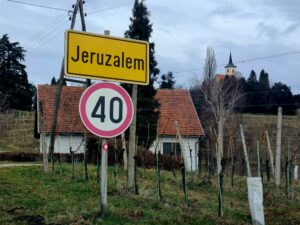Forget your French roast, or your Italian espresso, or your Breakfast blend. Forget your Arabica or your Robusta. When it comes to classifying coffee, Costa Ricans have made it easy – everyday, weekend, and special occasions. And if everyday is a special occasion, you’re in luck.
Coffee accounts for just 2.9% of Costa Rican exports. Back in the day, it was as high as 90%. [Trivia question: Top export from CR? Medical instruments. Followed by bananas and tropical fruit. It even exports tulips to Holland.]
We bought some coffee at the market on Sunday and were assured, as was to be expected, that it was the best in Costa Rica. This was before we knew as much as we know now.
Part of our day trip to La Paz to see the falls and the toucans, was breakfast at and a tour of the Doka Coffee Plantation in Alajuela. Marco, our guide, gave us a quick rundown of the history of coffee in the country. It arrived around 1820 and initially, the government sought to compete regarding production with Colombia (75 times the size of Costa Rica) and Brazil (100 times the size of Colombia). This was obviously a non-runner so instead of quantity, they now concentrate on quality – and exclusively Arabica.
The Vargas family have been growing coffee since 1931 – three generations – hence their brand name: Café Tres Generaciones. Of their annual production, 60% of their green beans go to Starbucks to be roasted and blended and whatevered. The rest, they roast themselves. Starbucks has its own plantation in the vicinity – Hacienda Alsacia – where it is experimenting with bean varieties in an effort to stop the coffee Apocalypse.
The origins of coffee are well known – the Ethiopian goatherder whose goats got a little jumpy after eating a red cherry from a plant. The same goatherder then burned the plant, inadvertently roasting the bean, and ending up smelling the coffee. The rest is history.








I’ve been mistakenly thinking that dark roasts (Italian espresso comes to mind) are best to wake me up while light roasts are better later in the evening so as not to keep me awake. But caffeine is liquid and the more time the bean spends in the oven, the less caffeine it holds. So I’ve been getting it ass backwards. There’s nowt wrong with my dark Italian roast in the evening and it’s the light ones I need for the morning.
And something else I learned. Coffea is a genus of flowering plants whose seeds are called coffee beans. Okay. I knew that. But it’s a member of the family Rubiaceae, which also includes citrus trees. So the flowers, when the plants are in bloom, will smell like jasmine or orange or lemon. Something new to add to my list of things to do before I die – smell the coffee blossoms. [Note to self: Try planting a coffee bean and see what happens.]
Tours come in various packages and while there are no prices on the Doka site, other sites list package prices from €50. The breakfast was great and being able to sample all eight coffees from light to dark was an experience. Mind you, the condensed milk killed the flavour but I couldn’t bring myself to have it black. All their blends are classed as weekend coffee. Am all set now for the slow wake-up when I get back.
On our way to La Paz, we stopped off to buy some Montey Copey specialty coffee from the much-touted Dota Tarrazú region of Costa Rica. It is one of the top-three world coffee-producing regions, up there with Kona (Hawaii) and Blue Mountain (Jamaica). [A piece of trivia: In 2012, Tarrazú Geisha coffee became the most expensive coffee sold by Starbucks in 48 of its US stores.] But like other successful regions, it has its issues with people cashing in on the quality:
A lot of the Tarrazú coffee being sold around the world is either a knock off or ‘hopeful-by-proximity’.
Hopefully, I got the real thing. Roll on those special occasions.
Share this:
- Click to share on Twitter (Opens in new window)
- Click to share on Facebook (Opens in new window)
- Click to share on Pinterest (Opens in new window)
- Click to share on LinkedIn (Opens in new window)
- Click to share on Reddit (Opens in new window)
- Click to share on WhatsApp (Opens in new window)
- Click to share on Pocket (Opens in new window)
- Click to share on Telegram (Opens in new window)
- Click to email a link to a friend (Opens in new window)







4 Responses